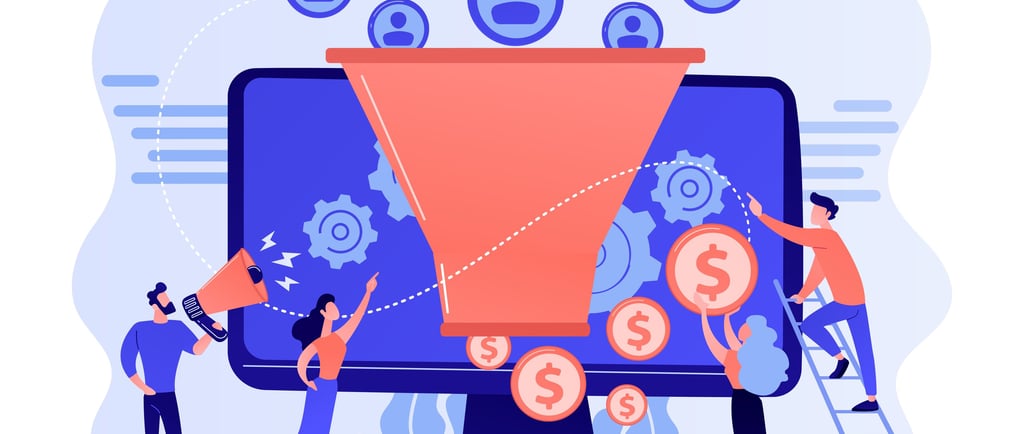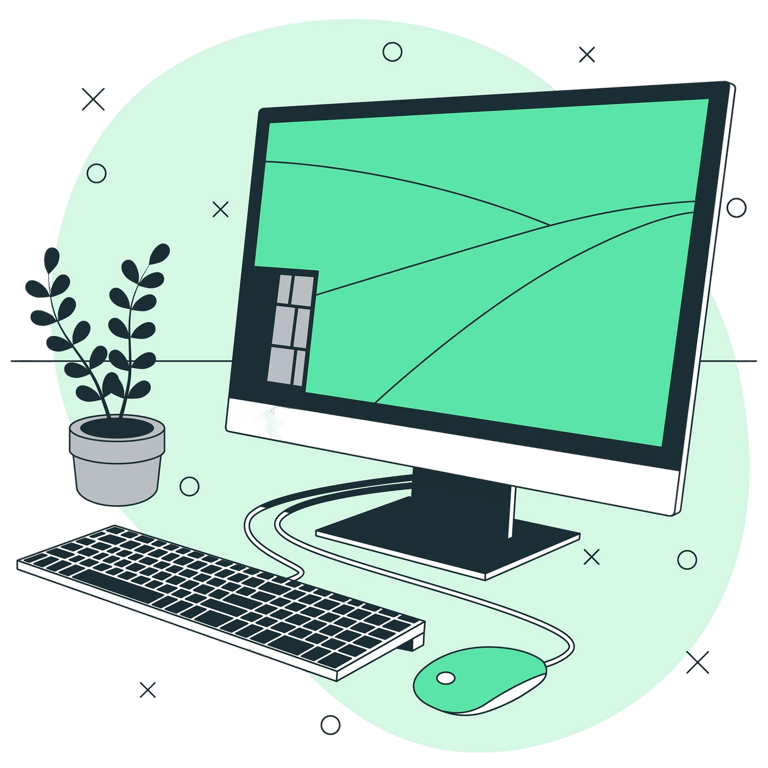How Long To See B2B SaaS Inbound Marketing Results?
How long does inbound marketing take to work for a B2B SaaS? Typically 6 to 12 months, but the right strategy makes all the difference. Learn how to attract, convert, and retain customers using the EACH Model for sustainable growth.
Mike Parsons
3/4/20255 min read


Let’s be honest—if you’re expecting inbound marketing to start flooding your inbox with leads next week, you’re in for a disappointment.
Inbound marketing is not a quick fix, a viral growth hack, or a magic funnel that instantly turns strangers into paying customers.
But here’s what it is: A compounding, scalable, long-term strategy that can make your B2B SaaS company unstoppable—if you have the patience to do it right.
So, how long does it take? 6 to 12 months.
It’s a marathon, not a sprint. And, like any good marathon, you need a solid game plan. Enter the EACH Model, which breaks inbound marketing into four key phases:
Educate (0-3 months) – Laying the foundation
Attract (3-6 months) – Driving targeted traffic
Convert (6-9 months) – Turning visitors into customers
Hook (9-12 months) – Keeping customers engaged and driving referrals
Let’s break it down.
Phase 1: Educate (0-3 Months) – Laying the Foundation
This is the groundwork phase. If inbound marketing were farming, this is when you’d be prepping the soil and planting the seeds.
What You’ll Be Doing:
Figure out your ideal customer profile (ICP). Who are they? What keeps them up at night? How does your SaaS solve their problems?
Create pillar content – Blog posts, whitepapers, case studies, guides. Anything that makes you look like an expert.
SEO 101 – Research keywords, optimize your website, and ensure Google knows you exist.
Build a lead magnet – An ebook, checklist, webinar—something valuable enough for people to exchange their email.
Set up email marketing. Your email list is gold; you don’t want to rely on social media algorithms.
What You Can Expect (0-3 Months):
A few curious visitors to your site
Some email signups, mainly from your existing network (or your mom)
Google is starting to notice your website (but not enough to send much traffic yet)
Reality Check:
Don’t expect any significant lead flow yet. This is like going to the gym for the first time—you’re not seeing six-pack abs overnight, but you’re building the habits that will get you there.
Phase 2: Attract (3-6 Months) – Getting on the Radar
You’ve got content. You’ve got a website. It’s time to bring in the right audience and generate leads.
What You’ll Be Doing:
Publishing blog posts regularly – Think 2-4 per month, optimized for SEO.
Building backlinks – Guest posting, PR, and partnerships to boost your Google ranking.
Leveraging social media – Especially LinkedIn, because that’s where B2B buyers hang out.
Running retargeting ads – To stay on the minds of people who visited but didn’t convert.
Launch more lead magnets – The more ways people can opt in, the better.
What You Can Expect (3-6 Months):
Steady increase in website traffic (think 10-20% month-over-month)
More lead magnet downloads and email subscribers
Some early inbound leads (but not a flood—more like a slow drip)
Reality Check:
People are interested, but they’re not ready to buy yet. Your job now is to keep nurturing them until they are.
Phase 3: Convert (6-9 Months) – Turning Browsers into Buyers
Now we’re getting to the good stuff. You’ve got traffic and leads; let’s turn them into customers.
What You’ll Be Doing:
Optimizing landing pages – A/B testing headlines, CTAs, and forms to boost conversions.
Running email nurture campaigns – Keeping leads warm until they’re ready to buy.
Doubling down on bottom-of-funnel content – Think case studies, product demos, and competitor comparisons.
Retargeting ads with urgency – “Hey, you downloaded our ebook last month. Ready for a demo?”
What You Can Expect (6-9 Months):
Higher conversion rates from leads to demos/trials
First inbound-generated closed deals
A solid pipeline of sales-ready leads
Reality Check:
If you have a long B2B sales cycle (3-6 months), some of the leads you generated in Month 3 are now making decisions.
Phase 4: Hook (9-12 Months) – Keeping Customers Engaged and Driving Referrals
Congrats! You’ve got inbound-generated customers. Now, let’s turn them into your best marketing channel.
What You’ll Be Doing:
Improving customer onboarding – Making sure new customers get value ASAP.
Launching a referral program – Because happy customers will bring in more happy customers.
Creating advanced content for existing users – How-to guides, exclusive webinars, customer success stories.
Building a community – A LinkedIn group, Slack channel, or exclusive events to keep customers engaged.
What You Can Expect (9-12 Months):
Inbound leads becoming your #1 source of customers
Referral traffic is growing as customers spread the word
Lower customer acquisition cost (CAC)
Reality Check:
At this stage, inbound starts compounding. The more content, engagement, and referrals you generate, the faster it scales.
Beyond 12 Months: Scaling & Optimization
After the first year, inbound marketing becomes an asset that keeps working for you.
Next Steps:
Scale content production – More blog posts, more formats (video, podcast, etc.)
Optimize and automate – Refine what’s working, ditch what’s not
Expand into partnerships & PR – Get featured in more prominent industry publications
Double down on referrals and community – Make your users your biggest advocates
What to Expect in Year 2:
Inbound leads surpassing outbound efforts
Higher quality leads and lower CAC
More brand trust and organic growth
Final Thoughts: Is Inbound Marketing Worth It?
Yes – If you’re patient and consistent.
No – If you expect instant results.
Inbound marketing is like compounding interest—slow at first, but unstoppable once it builds momentum.
If you stick with it, you’ll wake up a year from now with a lead-generating machine that works while you sleep.
Key Takeaways
First 3 months: Build the foundation, create content, optimize for SEO
3-6 months: Increase traffic, generate leads, establish credibility
6-9 months: Optimize conversion rates, turn leads into customers
9-12 months: Retain customers, launch referral programs, and scale growth
If you can commit to the long game, inbound marketing will outperform paid ads and cold outreach—helping your B2B SaaS company grow sustainably and profitably.
Time to get started.
Inbound Marketing Checklist for B2B SaaS Success
Phase 1: Educate (0-3 Months) – Laying the Foundation
☐ Have you figured out your ideal customer profile (ICP)—who they are, what keeps them up at night, and how your SaaS makes their life easier?
☐ Have you created pillar content like blog posts, whitepapers, or case studies to establish yourself as an industry expert?
☐ Have you optimized your website for SEO so Google knows you exist?
☐ Have you set up email marketing and lead magnets (e-books, templates, webinars) to capture those first subscribers?
Phase 2: Attract (3-6 Months) – Driving Targeted Traffic
☐ Have you published at least 2-4 blog posts per month to start appearing in search results?
☐ Have you shared your content on LinkedIn (and maybe even joined some discussions instead of lurking)?
☐ Have you built backlinks by guest posting or getting featured in industry blogs?
☐ Have you tested paid retargeting ads to bring back those almost-converts?
Phase 3: Convert (6-9 Months) – Turning Browsers into Buyers
☐ Have you A/B tested your landing pages and CTAs to ensure they convert visitors?
☐ Have you launched an automated email sequence to nurture leads instead of letting them go cold?
☐ Have you set up retargeting and behavioral tracking to keep potential buyers engaged?
Phase 4: Hook (9-12 Months) – Retaining and Leveraging Customers
☐ Have you improved customer onboarding so that new users stick around?
☐ Have you launched a referral program to turn happy customers into your best marketing team?
☐ Have you built a community (LinkedIn group, Slack channel, exclusive events) to keep customers engaged?
If you’ve checked off most of these, congrats—your inbound marketing engine is officially up and running. If not, it's time to get moving.


The Future of Marketing Moves at the Speed
The old way? Hire a slow, expensive agency.
The new way? Obtain a battle-ready marketing strategy in just 48 hours. Your next big breakthrough starts now.
Tailored strategies for efficient B2B marketing success.
Contact
Updates
© 2025. All rights reserved.

GrowthBooks by Apollo Advisors
ABN 34 346 108 139
Floor 11, 68 Alfred Street,
Milsons Point, NSW, 2061.
Australia


